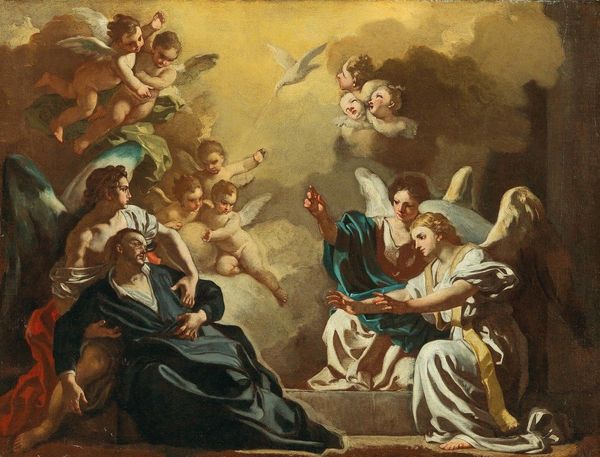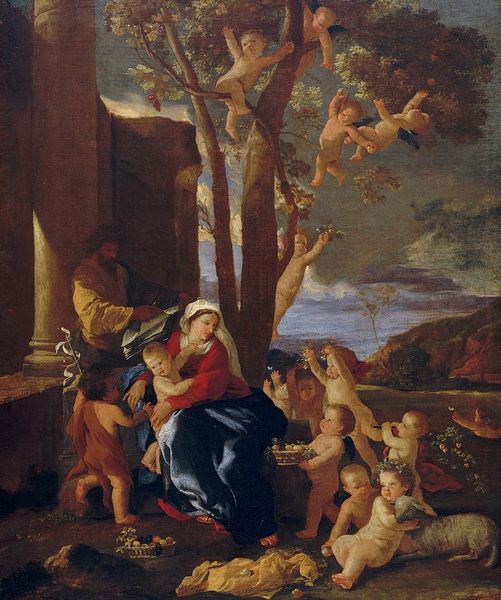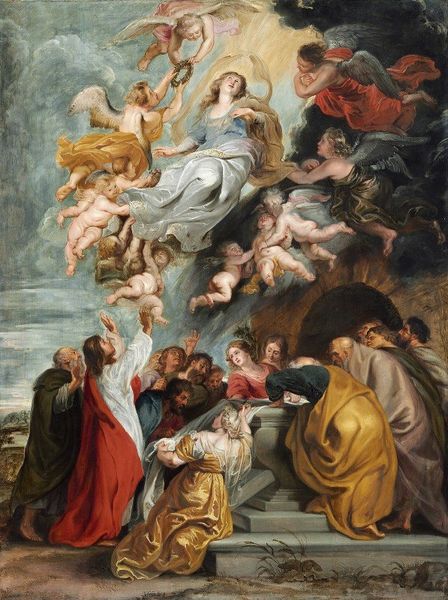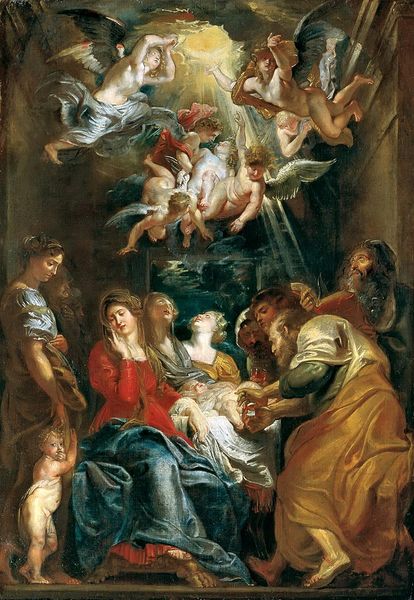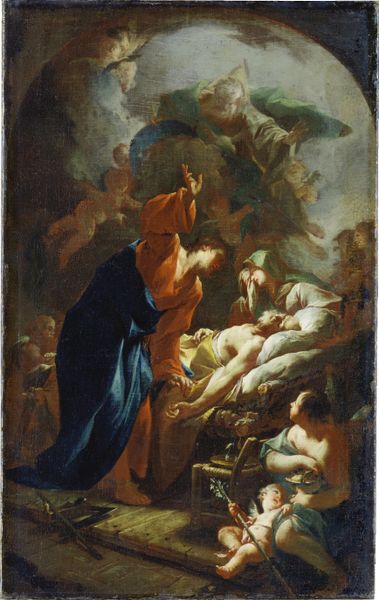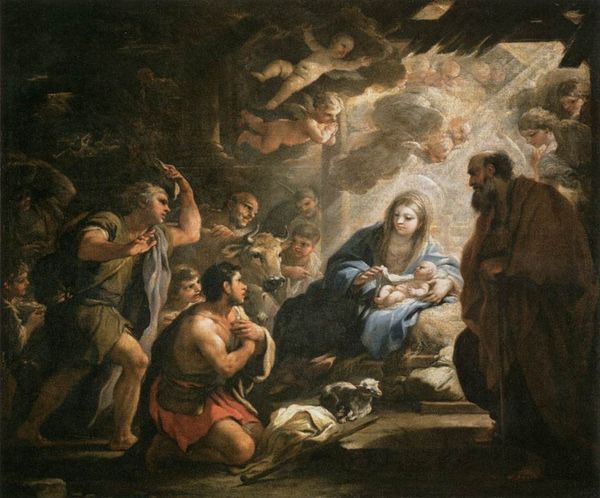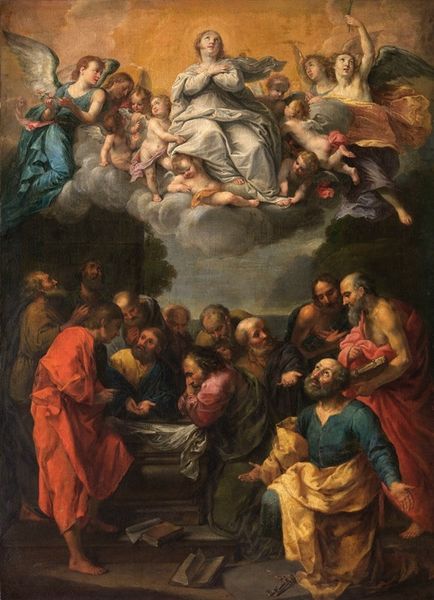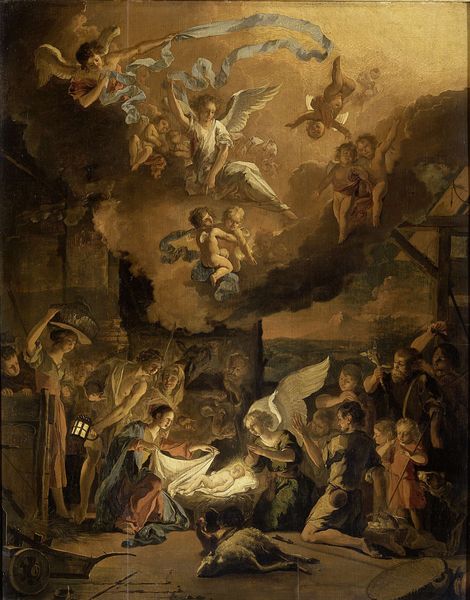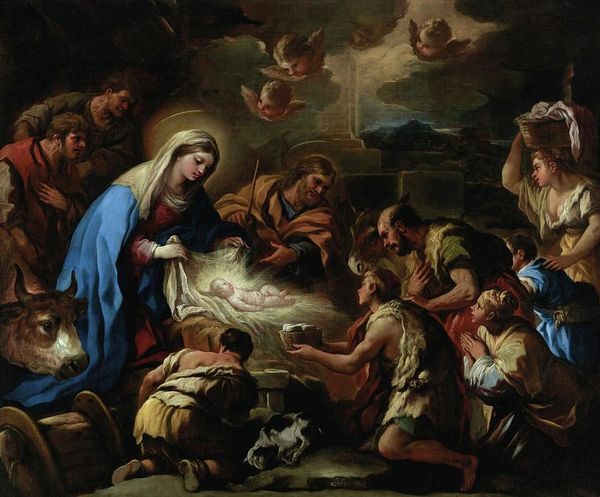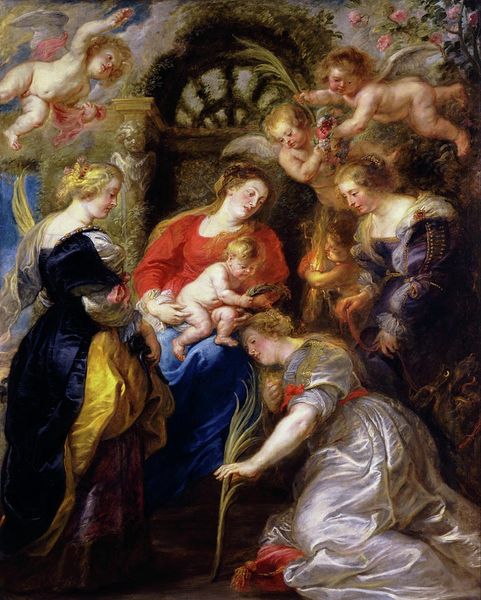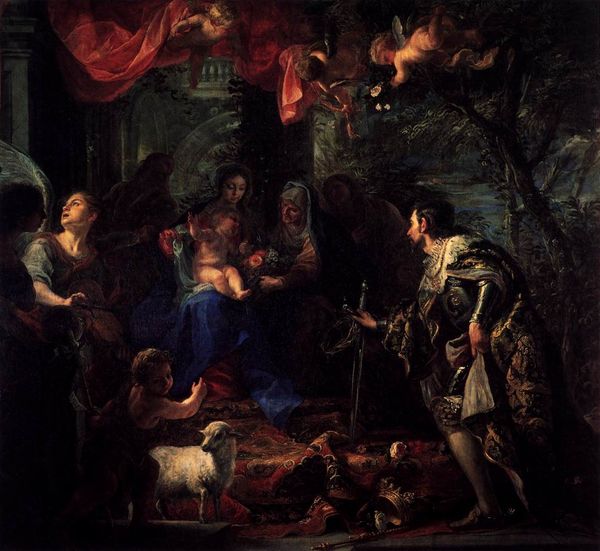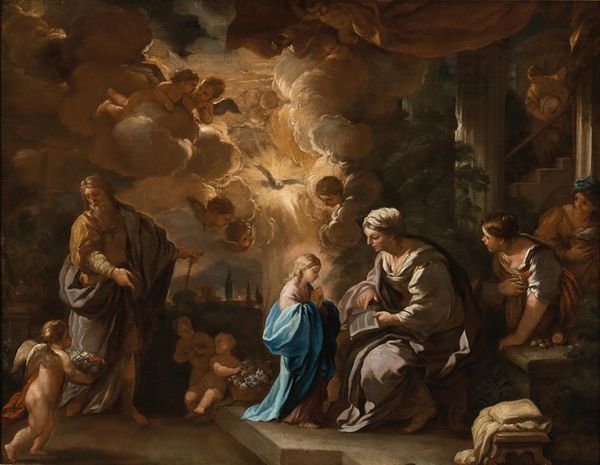
painting, oil-paint
#
portrait
#
narrative-art
#
baroque
#
painting
#
oil-paint
#
figuration
#
oil painting
#
history-painting
Copyright: Public domain
Editor: Here we have Sebastiano Conca's "The Adoration of the Shepherds" from around 1720, an oil painting currently housed at the Getty. It strikes me as quite theatrical with the lighting and the array of characters gathered around the newborn. What stands out to you in this piece? Curator: Immediately, I'm drawn to the materiality of the painting itself. Consider the price of pigments at this time, and how the vibrant blues and reds signaled wealth and patronage. What sort of commission led Conca to select oil on canvas, a process allowing for layers and adjustments, rather than, say, fresco? Who was dictating the content? The cost of ultramarine was more expensive than gold, what was the function of it, to show off wealth? Editor: That’s a compelling perspective. It makes me wonder about the social context in which it was created. You mentioned the commission, who was Conca working for at this time? Curator: Examining the composition – the division between the heavenly angels and earthly shepherds – it seems a reflection of the rigid social hierarchies of the time. Also consider the availability of these materials. Was Conca experimenting with novel pigments? Where were these materials sourced? The method is part of the meaning. It tells us of commerce and exchange in that time. Editor: The origin of the pigments does speak to broader trade networks. I never thought about art that way. Curator: The labor involved is often overlooked, too. How many hours of grinding pigments, stretching the canvas, and layering glazes are hidden within this seemingly effortless scene? Do we devalue craft by omitting the labor necessary to create something? Editor: I’m definitely thinking differently now about what this painting represents. It is fascinating to realize how many stories a piece of art can tell when you consider the materials and process! Curator: Indeed, understanding the "how" often reveals a deeper "why" than purely aesthetic interpretations allow.
Comments
No comments
Be the first to comment and join the conversation on the ultimate creative platform.
